Two years ago, I got the chance to witness first-hand how art education, especially alternative approaches to it, translates into how young artists emerge onto the art scene. Last year, I learned about the beneficial effects of leaving one’s familiar context and practicing your craft elsewhere, particularly in a more natural environment. This year, I lived both of these experiences in Gurghiu, Târgu Mureș as I visited Minitremu Art Camp and everything simply came together.
Around this time of the year, I reminisce about the days when I was a student and those memories taste bitter sweet. On the one hand I miss seeing the world with teenage exuberance and uncurbed ambition; on the other hand, I can’t help but feel anxiety at the thought of ridiculously rigid school regimes and overly strict dictator teachers. Overall I’m relived it’s all over, but nowadays I can’t help but wonder what would have made me feel differently.
I studied in a regular high school, so I was naturally jealous of kids who went to art high school, who I perceived as happier, more independent and exponentially cooler than the rest of us. It would make sense for art schools to be less strict with their students. Turns out, art high school comes with its specific kind of rigorousness: mastering the crafts. Unfortunately, school turned studying and practicing art into yet another tedious activity. Teachers often forget to nurture the sensitivity that artists need in order to create. As cliché as that sounds, school poses a dangerous threat of desensitizing and stifling any artistic spirit.
Not only that, but art is also hard to teach. I mean, how can something so nebulous become so concrete to fit a high school curriculum? The upper education system also has its blind spots. Although you’d think university is the place to really seal the deal on what it is to be an artist and have open access to like-minded people, resources and freedom to experiment, in reality the education system does little to prepare an individual for taking on the art world. There is the risk of becoming stuck in an apprenticeship with a narrow-minded artist-professor who demands that students follow in his footsteps or learning next to nothing about how to build a network, how to approach curators, galleries or even how to properly showcase your work.
Truth is, no one can really prepare for your road ahead, as any person activating in the local art scene can tell you. You often find yourself having to play a jack of all trades in order to make a name for yourself. The art duo Monotremu can attest to that. Laura Borotea and Gabriel Boldiș began their career almost a decade ago with a sarcastic yet critical approach to the Romanian society. At first they were active in the public space, with artistic interventions and little to no budget in Timișoara and later Târgu Mureș, but they quickly realized that the local art scene did not offer much support. If you want something done, you have to do it yourself. Monotremu started working alongside Bartha Joszef at B5 Studio, a contemporary art space in Târgu Mureș whose aim was to bring together both Romanian and Magyar artists and connect with the regional art scene. In this position of art mediators, Laura and Gabriela gained a lot of insight and many connections, and for the past four years they have been putting all of this to good use for the benefit of the entire artistic community.
Minitremu Art Camp is a yearly summer camp for teenagers dedicated to contemporary art, the only one of its kind in all of Romania. The financial support from the National Cultural Fund means there is no participation fee, so anyone between the ages of 14-18 can sign up for the camp with a just a simple letter of interest. Each year, around 20 high school students then set out to take their first steps onto the art scene, guided by 6-10 trainers for two weeks. National and international artists and curators, such as Dan Perjovschi, Alexandra Pirici or Adi Ganea have been invited to prepare 2-day workshops for the young participants.
This year Minitremu Art Camp took place in Gurghiu, a posh village outside of Târgu Mureș, part of the National Forest District and home to the regional forest study college. Surrounded by greenery, fresh air and a quaint and well-kept architectural infrastructure within a welcoming community of locals, Gurghiu seems the perfect place to clear your head and let inspiration in.
I’ve discussed before the benefits of leaving your current context and, consequentially, your current head space and trade it for a new learning experience. For artists, taking their practice into various frames is crucial not only for their artistic growth, but also their mental well-being. And that goes double when you’re a starry-eyed teenager.
I’ve never been to camp before, let alone an artistic one, so it was a first time experience for me as is was for the shy yet curious bunch I met there. Coming from all of Romania, with even a few international students, it was only natural for everyone to keep to themselves and play it safe, at least at first. After all, everything everyone knew about art education was limited to what they had experienced in school. Some were regular high school attendees who only shared a passion for art.
It is this passion that Monotremu look for when making the selection for participants. They put out an official call but they also personally reach out to other art educators to spread the news. They carefully read each letter of intent, in an attempt to determine what each individual candidate wants out of this experience and just how serious they are about it. Keeping an open mind and heart is the main criteria for selection.
Some students know each other from back home, as they’ve been planning to apply for the camp together; others take a leap of faith and arrive on their own. Minitremu Art Camp doesn’t feel like a school, it feels like a small village – one in which the entire culture is shaped by young people and their needs – educational, social, personal. Minitremu Art Camp aims to be a safe space where young people use the arts to learn more about themselves and the world, a place where creativity, energy and enthusiasm abound – through inspiring and varying activities, new art mediums and people with experience, working outdoors and more. But it is equally a place for calm reflection, with campfires, stargazing, storytelling, music and friendships that deepen through shared experience. At camp, young people look out to the wider world but also inward, as they explore their artistic dreams.
On a personal level, Minitremu Art Camp struck me as a both a place for leaning and unlearning: it’s an attempt to deprogram the toxicity and skewed mentality that surround public education. There is little regard for proper communication and creating a comfortable learning environment for the students. Moreover, a traditional educational system can cultivate unhealthy rivalry and hierarchies. Students who blossom within the system are praised and rewarded, eluded into thinking they are better than their classmates, while underachievers are punished and even publicly ridiculed. This kind of toxic environment drastically impacts the way in which children relate to each other. Ambition and curiosity are sadly lost along the way. What Minitremu Art Camp aims to do is a frame for sharing knowledge, where everyone learns from each other, campers and trainers alike, where information is spread all around.
Here, everyone has a voice, speaking your mind is encouraged, there is no such thing as being bad at something, you are never compared to anyone else. Here, you are free to be yourself and do things at your own pace. This kind of mentality totally encourages art production. As an artist, you must cultivate your inner voice and trust in yourself, and this can only be achieved within a positive and welcoming context. Gabi and Laura’s views on art and life are as wholesome as they come: they don’t believe in competition and hogging all the spotlight, on the contrary, they believe in collaboration, making room for everyone and sharing their knowledge and know-how. And so Minitremu Art Camp is not only a place to prepare for the art world, it’s also a place that aims to make it better with each new generation of campers.
Laura’s personal experience as a public school teacher, as well as the fact that her son had just started primary school, gave her a clear overview of the huge responsibility of training young minds. Her knowledge accumulated over the years within the camp has influenced her activity as a teacher and vice versa, thus seeking to spread the same values both inside and outside the art camp. Minitremu Art Camp comes to enrich the knowledge students have already accumulated throughout school and work up their appetite for learning. The selection for the trainers for each edition is also a careful process: the duo looks to invite artists and theorists from all walks of life, in order to be able to offer the campers the widest range of artistic experiences. They also look for people who are not only good practitioners, but also good teachers, to be able to establish a report with the kids and have fun while doing so. This year, Manuel Pelmuș, Andrei Dinu, Raluca Voinea & Edi Constantin, Szabolcs KissPál, Irina Bucan Botea & Jon Dean held fun and innovative indoor and outdoor workshops that are not only mean to creatively stimulate the participants but to also create the frame for them to work together in teams.
The trainers prepare tasks for participants, at times asking them to prepare beforehand: Szabolcs KissPál asked everyone to bring images of objects, or even the objects themselves, related to their personal family heritage. This kind of exercise enables the participants to keep in mind the archival dimension of apparently banal objects and to consider history as a hallmark for approaching various artistic processes. It can also be a way to introduce future artists to processes of investigation, not to mention a novel way for the campers to get to know each other better. Designer Andrei Dinu, known for his brand Prosper Center but also for his work in scenography, brought clothes, textiles, patterns, sprays and other materials for his fashion design workshop, where he assisted the youth in making their own unique garments during the first day of his workshop, followed by a fashion photo shoot the next day, packed with modeling, visiting sites and finding the perfect lighting. Raluca Voinea & Edi Constantin of tranzit.ro/Bucharest are already familiar with the wholesome practice of combining art and nature back home in Bucharest, where they tend to the already renowned tranzit garden with just as much care as they hold for art. Their workshop was also an eclectic mix of theory and practice: the campers had to make a mental exercise of imagining a dystopia where planet Earth is no longer a hospitable environment and planetary travel is a viable option, but they also got a lesson in doomsday prepping and built together a shelter in the woods. It was this shelter that prompted a group of students to independently start filming and writing a script for a short film – Minitremu Art Camp encourages spontaneous artistic endeavors such as these. Video artists Irina Botea and Jon Dean were naturally thrilled to look over their progress and give them valuable tips for their film. The duo held an informal workshop that combined all sorts of physical and mental exercises, as well as sound experiments and writing. Last but not least, Manuel Pelmuș, choreographer and performance artist, was actually the first trainer to arrive at camp, so it was his mission to break the ice and create a comfortable environment where the participants, who barely knew each other, would feel free to experiment. So he proposed a series of performative exercises which involved splitting into small groups with special consideration for how the teens gaze at each other while they move. Activities likes these helped ease everyone into the open and vulnerable mind-set needed to perform.
Outside the workshops, nature hikes and visits to local landmarks were also on the schedule, as well as movie nights, karaoke, and a general freedom of movement. The teens were nervous and rather quiet at first, but as soon as they understood what they were dealing with, their demeanor quickly improved and the camp was filled with laughter and good vibes. For most, it was the first time their “superiors” treated them as equals. Teacher-student hierarchies completely dissolved, making room for real collaboration and communication. Many students were thrilled to learn and experiment with art mediums they only read about and this is precisely what Minitremu Art Camp set out to achieve – a relaxing and comfortable space, with consideration for nature, where the creative mind can wonder, campers and trainers alike.
Needless to say, the camp felt like a nature retreat where we could all clear our heads and take a much needed break from the stressful art world. Friends of the organizers and artists were also welcomed for short visits to join in the artistic activities and overall fun. Minitremu Art Camp was a very insightful as well as chill experience for me included. I got a glimpse inside the practice of some of the top players on the cultural arena, I learned new ways of communicating and bringing people together and I’ve watched ideas blossom into veritable art pieces. I couldn’t help but feel a little jealous over the young participants who now possess valuable knowledge for their impending incursion into the art world. It is an eye-opening experience to be able to communicate and work one-on-one with professional artists and curators. Someone called it “an early introduction to the local art bubble” and they’re not wrong.
POSTED BY
Marina Oprea
Marina Oprea (b.1989) lives and works in Bucharest and is the current editor of the online edition of Revista ARTA. She graduated The National University of Fine Arts in Bucharest, with a background i...
marinaoprea.com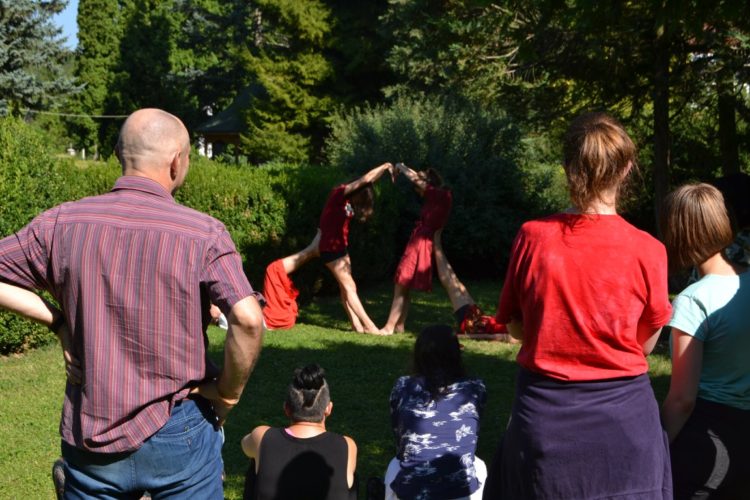
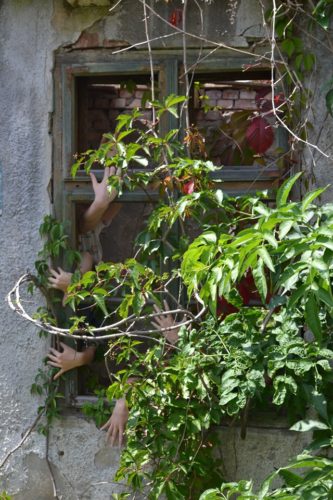
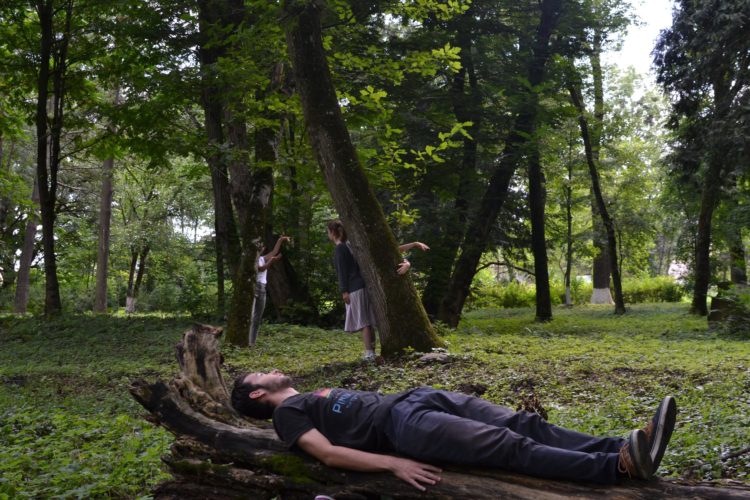
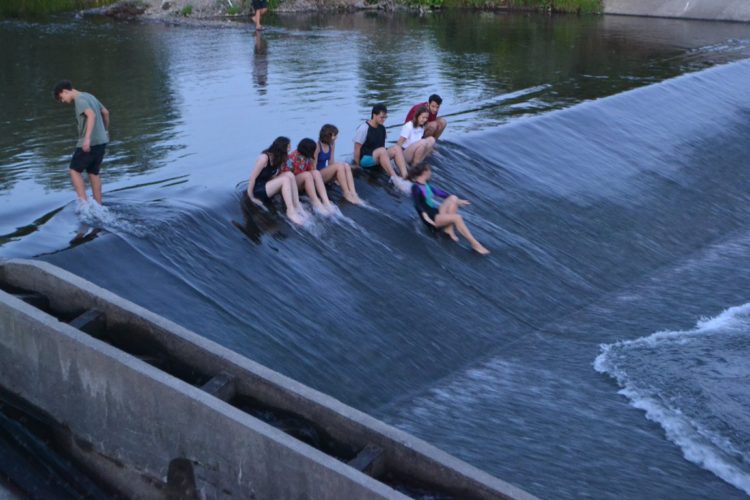
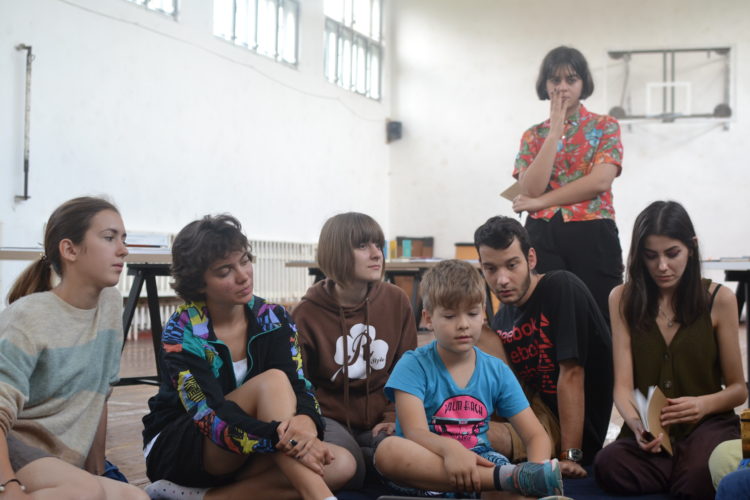
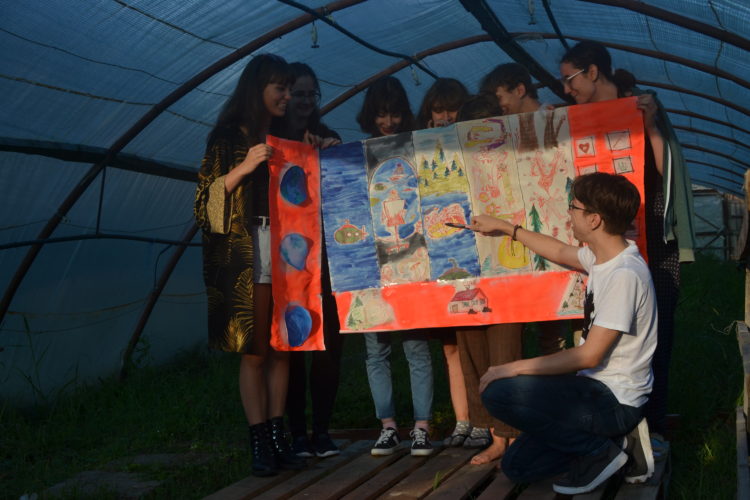
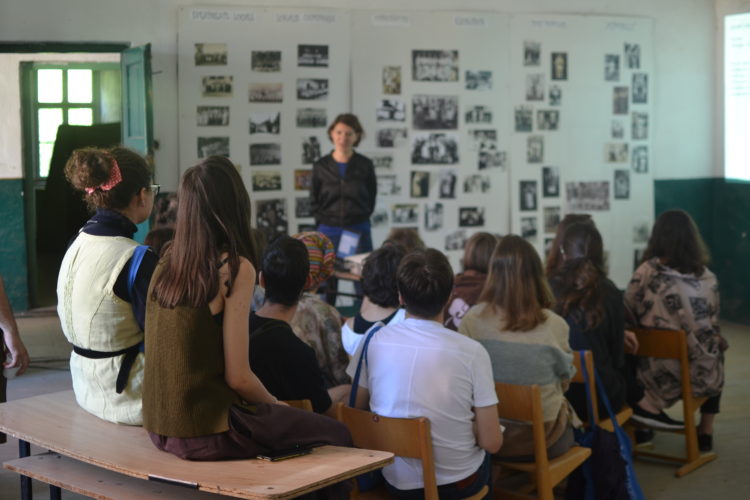
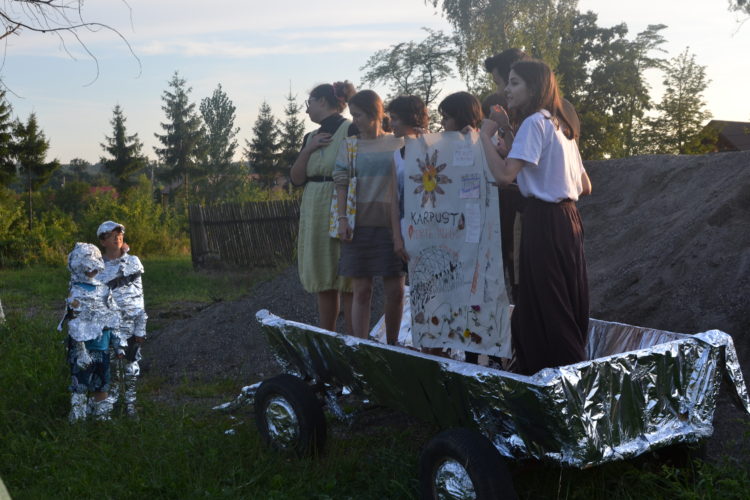
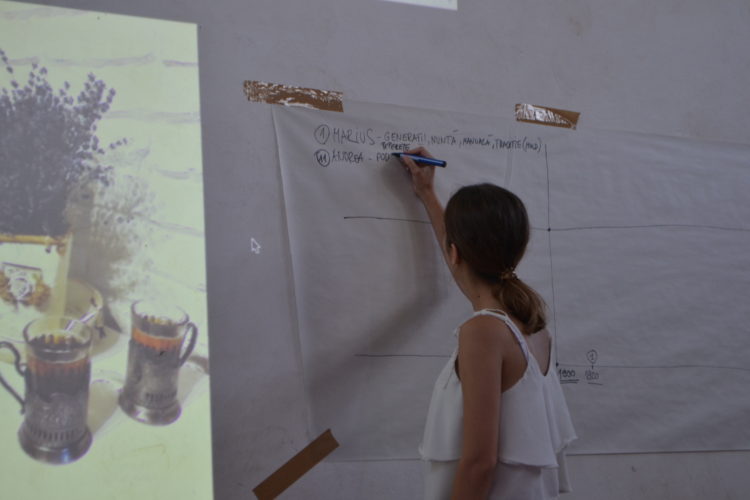
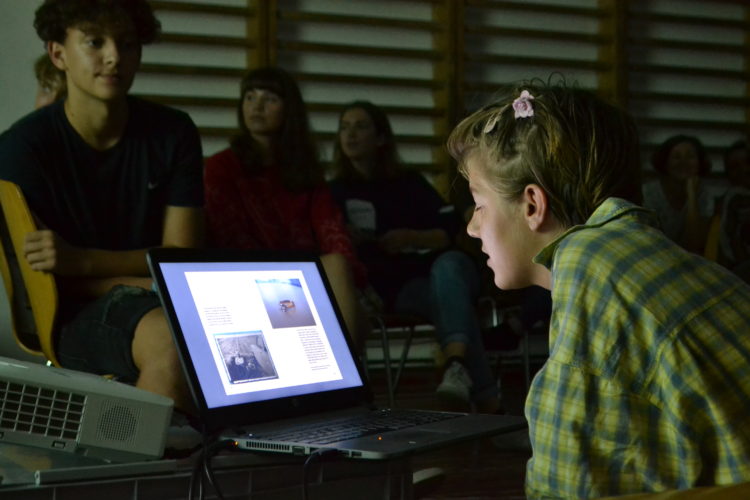
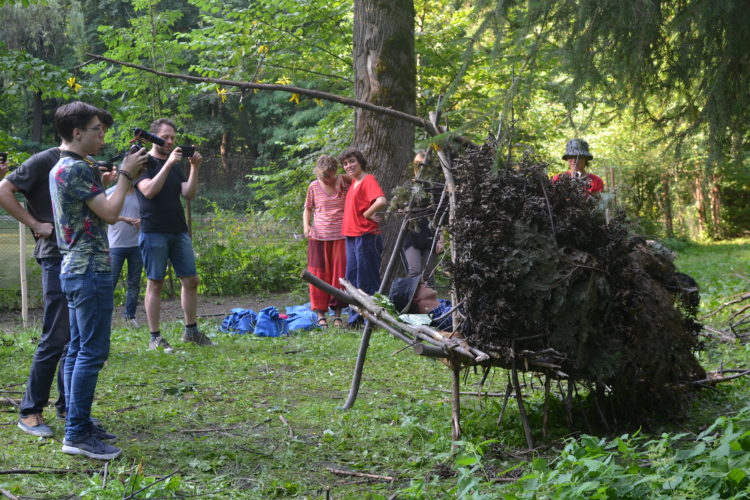
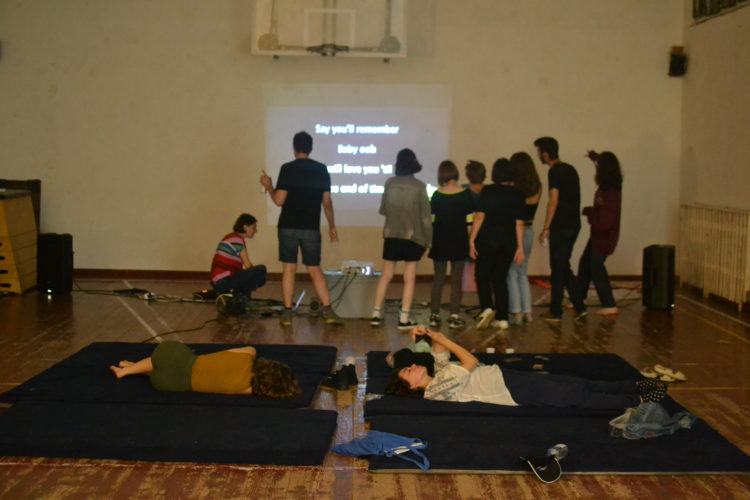
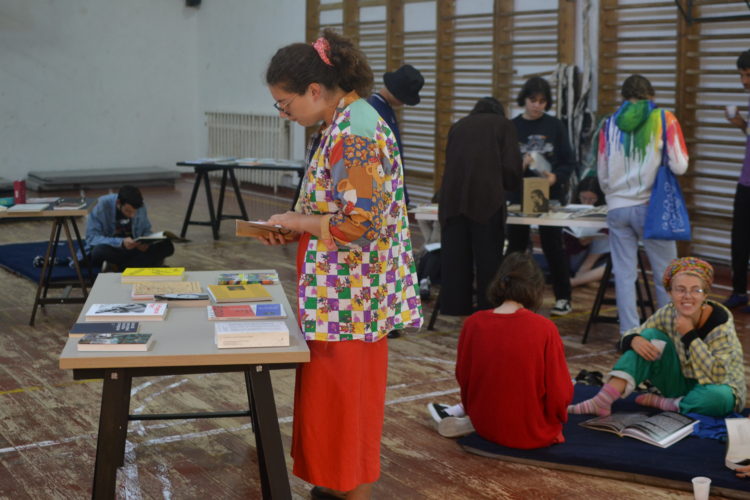
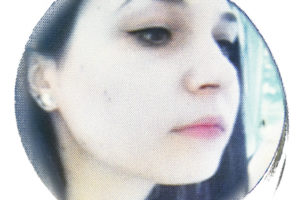
Comments are closed here.